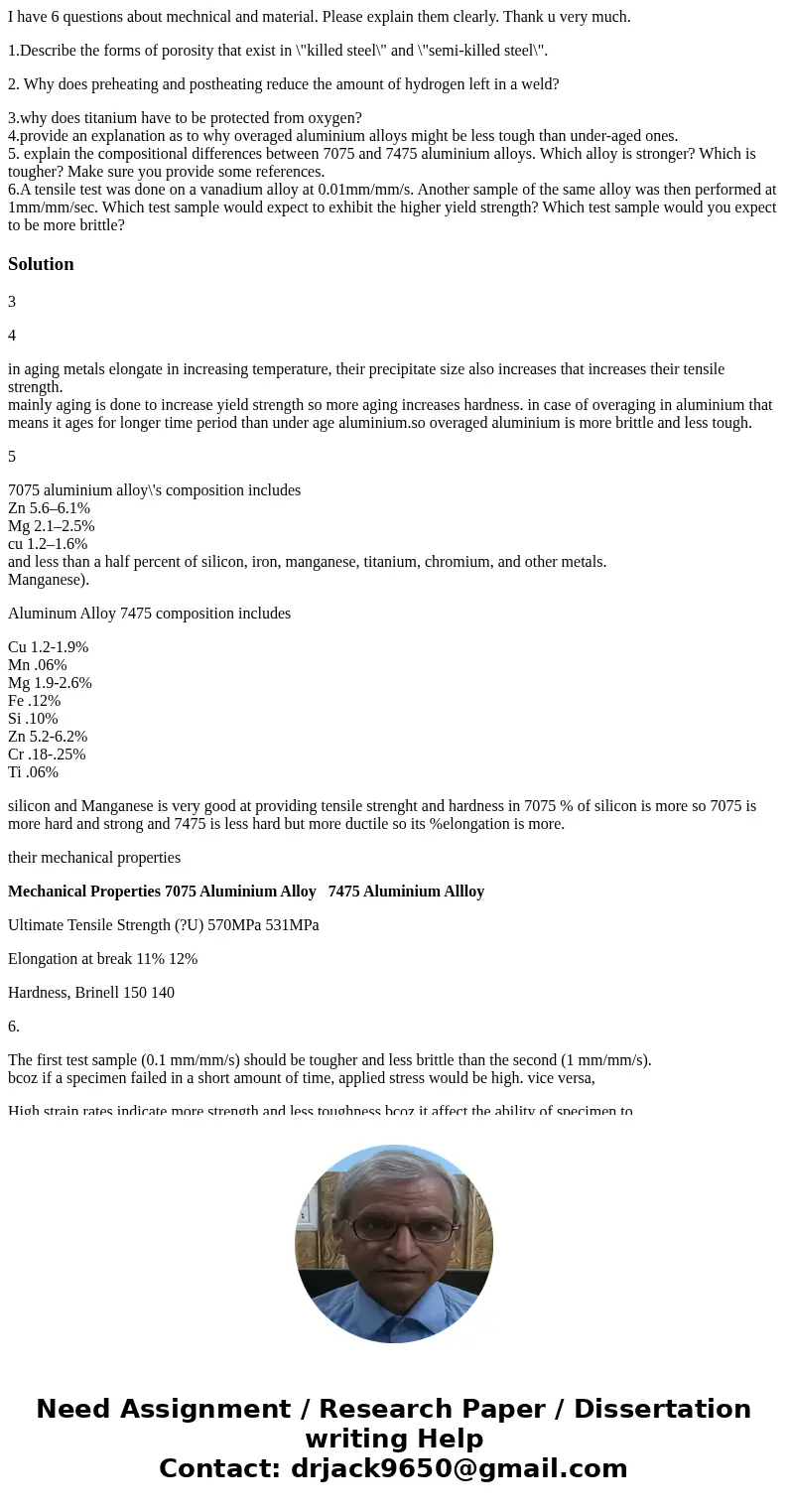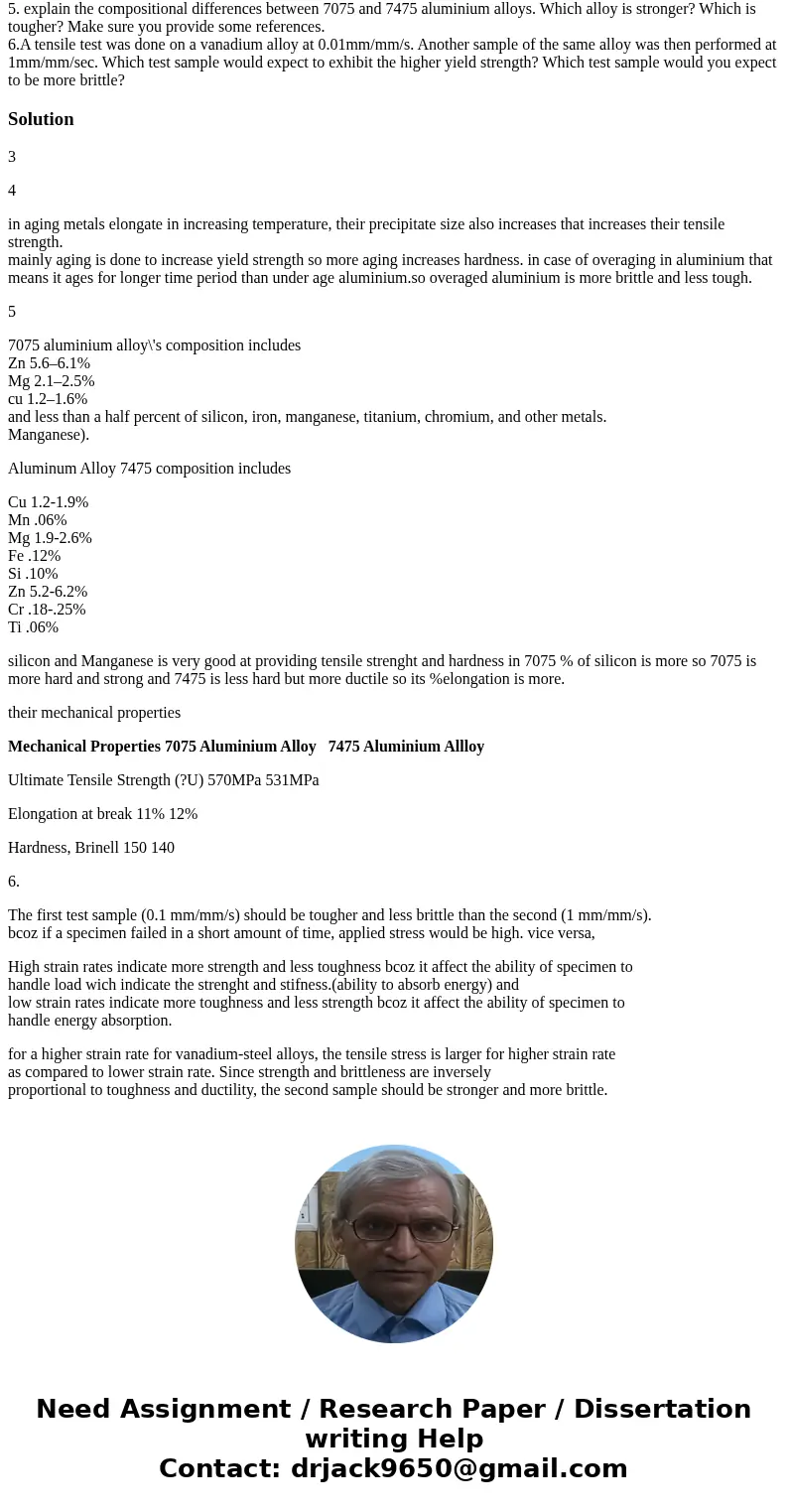I have 6 questions about mechnical and material Please expla
I have 6 questions about mechnical and material. Please explain them clearly. Thank u very much.
1.Describe the forms of porosity that exist in \"killed steel\" and \"semi-killed steel\".
2. Why does preheating and postheating reduce the amount of hydrogen left in a weld?
3.why does titanium have to be protected from oxygen?
4.provide an explanation as to why overaged aluminium alloys might be less tough than under-aged ones.
5. explain the compositional differences between 7075 and 7475 aluminium alloys. Which alloy is stronger? Which is tougher? Make sure you provide some references.
6.A tensile test was done on a vanadium alloy at 0.01mm/mm/s. Another sample of the same alloy was then performed at 1mm/mm/sec. Which test sample would expect to exhibit the higher yield strength? Which test sample would you expect to be more brittle?
Solution
3
4
in aging metals elongate in increasing temperature, their precipitate size also increases that increases their tensile strength.
mainly aging is done to increase yield strength so more aging increases hardness. in case of overaging in aluminium that means it ages for longer time period than under age aluminium.so overaged aluminium is more brittle and less tough.
5
7075 aluminium alloy\'s composition includes
Zn 5.6–6.1%
Mg 2.1–2.5%
cu 1.2–1.6%
and less than a half percent of silicon, iron, manganese, titanium, chromium, and other metals.
Manganese).
Aluminum Alloy 7475 composition includes
Cu 1.2-1.9%
Mn .06%
Mg 1.9-2.6%
Fe .12%
Si .10%
Zn 5.2-6.2%
Cr .18-.25%
Ti .06%
silicon and Manganese is very good at providing tensile strenght and hardness in 7075 % of silicon is more so 7075 is more hard and strong and 7475 is less hard but more ductile so its %elongation is more.
their mechanical properties
Mechanical Properties 7075 Aluminium Alloy 7475 Aluminium Allloy
Ultimate Tensile Strength (?U) 570MPa 531MPa
Elongation at break 11% 12%
Hardness, Brinell 150 140
6.
The first test sample (0.1 mm/mm/s) should be tougher and less brittle than the second (1 mm/mm/s).
bcoz if a specimen failed in a short amount of time, applied stress would be high. vice versa,
High strain rates indicate more strength and less toughness bcoz it affect the ability of specimen to
handle load wich indicate the strenght and stifness.(ability to absorb energy) and
low strain rates indicate more toughness and less strength bcoz it affect the ability of specimen to
handle energy absorption.
for a higher strain rate for vanadium-steel alloys, the tensile stress is larger for higher strain rate
as compared to lower strain rate. Since strength and brittleness are inversely
proportional to toughness and ductility, the second sample should be stronger and more brittle.


 Homework Sourse
Homework Sourse